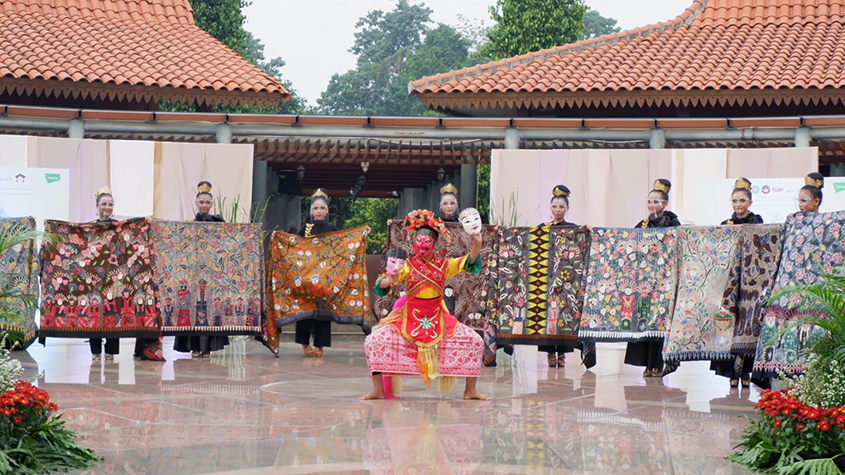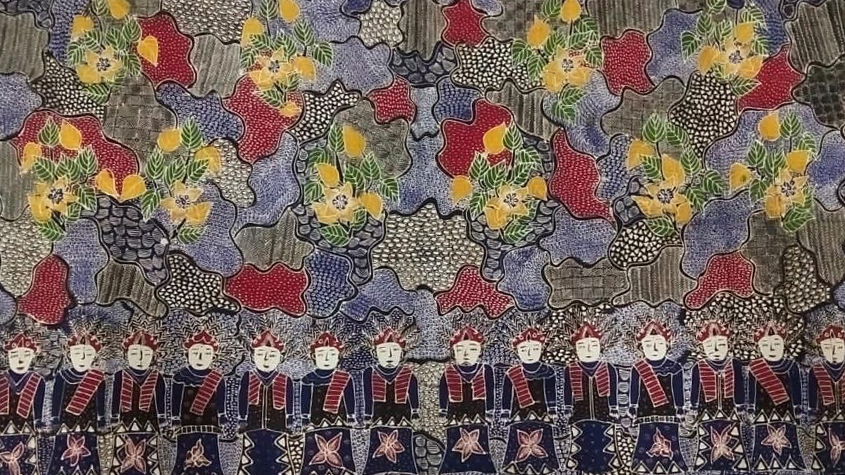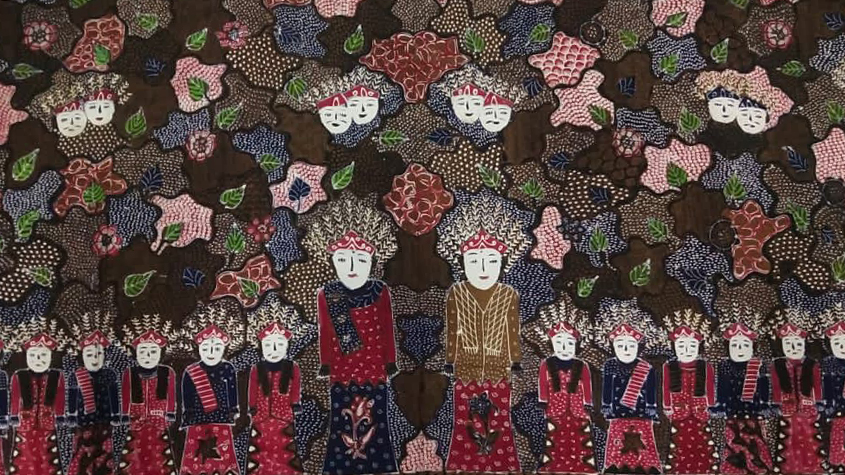Ethys Mayoshi was always an artist at heart and self-taught drawer. Inspired by her country’s traditional batik culture, she created her own batik brand and original designs in 2010. Beyond a commercial interest, Ethys is a strong advocate of batik and its ancestral culture. Often on the road, and now virtually, she holds exhibitions to present the ancient art to other countries.
Born in Tegal, a large city in the northwest part of Central Java, 50 years ago, Ethys created Batik Gobang in Jakarta. Gobang is a traditional Indonesian weapon that embodies the creative spirit and an old currency used while Indonesia was still under Dutch colonization.

Ethys graduated from Bandung University, majoring in human resources and later in life became a consultant. She however kept her passion for drawing and the batik culture alive. “I was always interested in batik, because it is an art, and each batik tells its own story and is full of meaning,” she said.
Ethys’ grandmother was a batik master, and a handmade batik producer in Tegal and Ethys as a child was surrounded by her grandmother’s creations. Through batik, Ethys can convey her inspiration and reflect life around her in her creations.
When she created her company, besides looking for profit, her main goal was to revive the batik culture in Tegal, as in her view, the culture of batik has been diminishing over the years.
Batik – Indonesia’s Cultural Heritage
Indonesian batik, which is thought to be over 1,000 years old, was added to UNESCO’s Intangible Cultural Heritage of Humanity list in 2009. UNESCO states, “The craft of batik is intertwined with the cultural identity of the Indonesian people and, through the symbolic meanings of its colors and designs, expresses their creativity and spirituality.”

According to Ethys, different places in Indonesia give a different background and inspiration to batik.
As a strong advocate of the Indonesian batik culture, Ethys has been trying to promote it around the world and educate people on how to make batik so other countries can develop their own batik culture. Her advocacy travel took her to several countries, including Singapore, Lebanon, Japan, France, and Azerbaijan.
How are Batiks Made
Batik, Ethys explained, is a work and an art describing the culture, the flora and fauna, which is drawn on white cloth with a copper “tjanting” (pen) holding melted candle wax. The wax serves as the outline of the drawings before colors are applied. The wax then melts away when the batik is washed.
Ethys bases her designs on elements of the Betawi culture, Jakarta’s plants, animals, and life. The Betawi culture is the traditional culture the indigenous people of Jakarta, a community of mixed descent and a mixture of different races and ethnic groups. One of the elements used by Ethys is the “ondel ondel”, giant puppets, symbol of the Betawi culture, and which have become an icon of the city.
Mindful of sustainable development, Batik Gobang recycles waste from batik production into vases or packaging boxes.
Trademark Protection – safeguarding Batik Gobang’s creations
Ethys, who had a bad experience with substandard unlawful copies of her work in the past, now opted to sell her products in her gallery in Jakarta, in collaborating shops, and during exhibitions and fashion shows, which often promoted by the government.
International customers usually buy her products through her exhibitions, or from her gallery when they visit Jakarta. Some of her products can be purchased online, from her Instagram account (@batikgobang_jakarta), but only a small number of products are on offer, mainly former designs, to avoid copying risks.
She registered a trademark for her company in July 2018, which she says is very useful. “I feel very protected from plagiarism.” However, her designs are not registered because there are too many of them, she said, adding that the government could provide protection for designers and producers so their designs do not get copied.
Fostering diversity and Knowledge Sharing for Batik Making
Batik Gobang now includes 60 staff, 50 of which, mainly women are making the batik, while the rest of the staff is managing sales and administration. She also routinely employs disabled and deaf people as batik makers. The marketing, the design and sample making is done in Jakarta, while the batik production is in Tegal, Central Java.

All of Ethys’ batiks are handmade. A batik takes between ten days and one month to produce. Batiks are then turned into dresses, shirts and blazers.
Ethys hopes that in the coming months/years she will be able to promote batik to other countries, and to organize more fashion shows and provide batik education outside of Indonesia. The Covid-19 pandemic is hindering her plans but the government supports online fashion shows to which she participated, and she goes to rural area to present her collections in the respect of the covid-19 health protocol.
Source: WIPO

 Client Focus
Client Focus